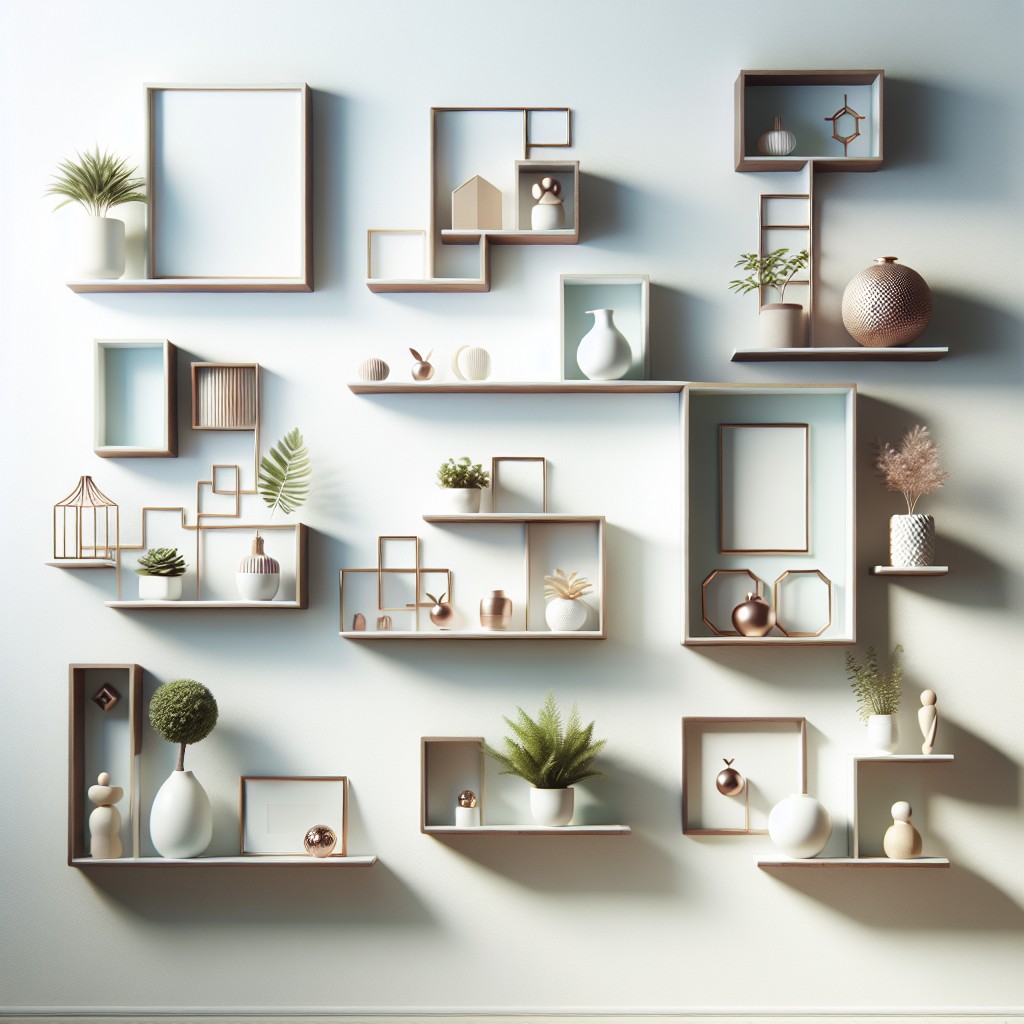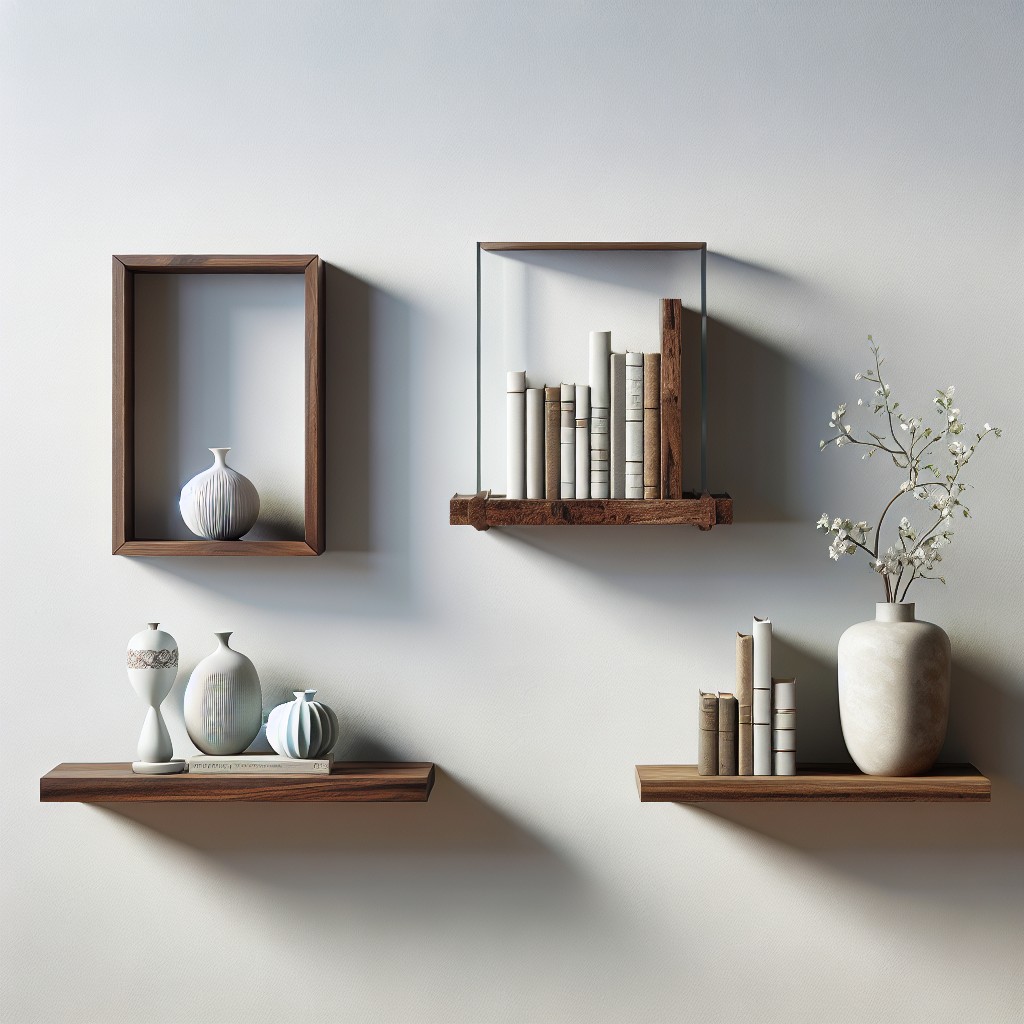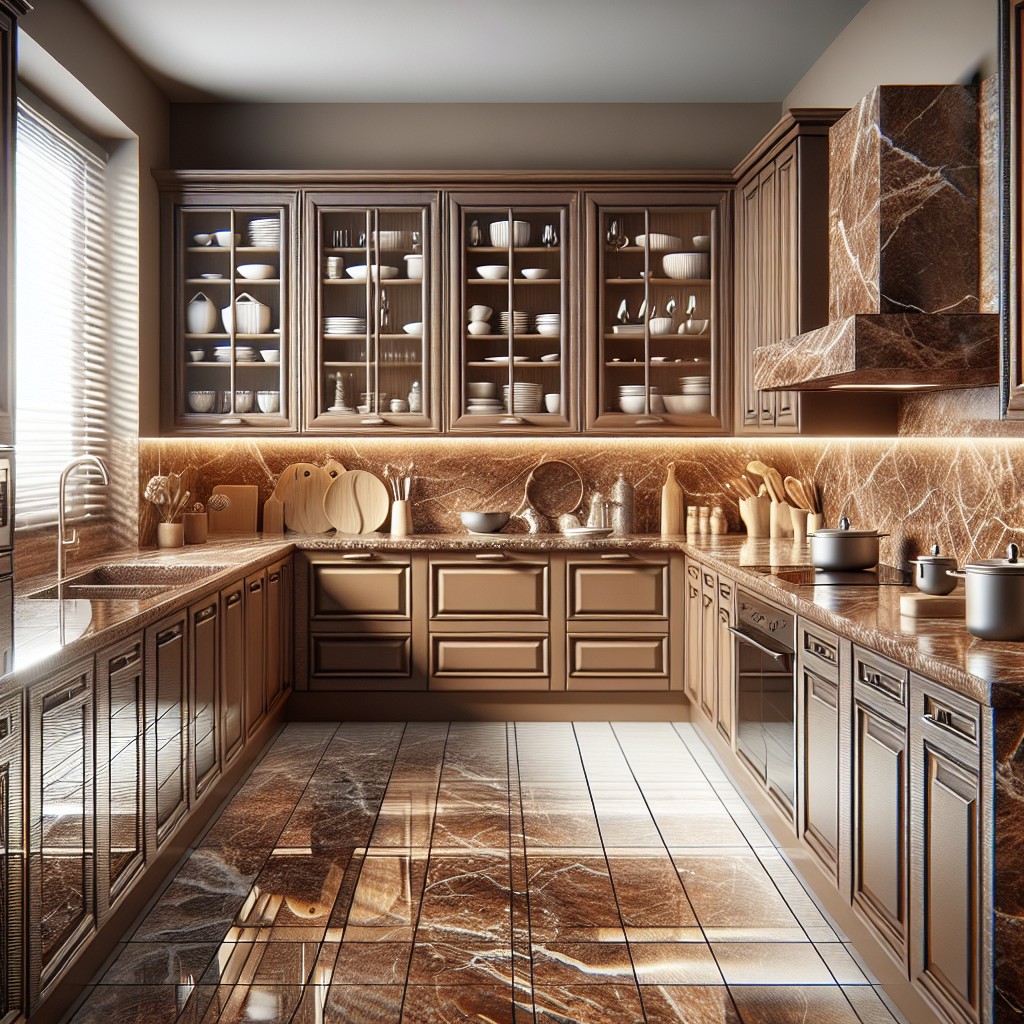Last updated on
Floating shelves should be a minimum of 2 inches thick to ensure enough strength to support weight, although the exact thickness can vary depending on factors such as the material of the shelf, the load it needs to carry, the wall it’s going to be mounted on, and personal aesthetic preference.
Selecting the appropriate thickness for your floating shelves is more than a mere detail—it’s a crucial decision that ensures both functionality and visual appeal.
Whether you’re looking to exhibit a collection of books or simply display a few cherished trinkets, understanding the delicate balance between the weight of the items and the shelf’s thickness is key.
From the robust 2-inch thick shelves that anchor heavier objects, to the subtler 1-inch options that cater to lighter decor, this guide dives into the nuances of floating shelf thickness.
We tackle varying room aesthetics, address the intricacies of longer shelves, and provide a clear pathway to choosing the ideal thickness for your space, ensuring your shelves are both supportive and stylish.
Key takeaways:
- For heavier items, aim for a minimum thickness of 2 inches.
- Thinner shelves, around 1 to 1.5 inches, are suitable for lighter objects.
- Consider room decor and design style when choosing thickness.
- Standard range for floating shelves is 1 1/4 to 2 inches.
- Extended shelf lengths require increased thickness for support.
What's Inside
Determining the Ideal Thickness for Your Floating Shelves

When selecting the perfect thickness, consider the shelf’s purpose. For books or heavier items, aim for a minimum of 2 inches to ensure adequate support. Thinner shelves, around 1 to 1.5 inches, are suitable for lighter objects and lend a sleek, modern look. Room decor and design style also play a role. In minimalist spaces, thinner shelves blend well, while traditional settings often call for thicker, more substantial shelving. Always balance aesthetic appeal with functionality to achieve the best results for your space.
Choosing Material for Durability and Aesthetics

Selecting the right materials for your floating shelves is crucial, as it influences both their longevity and their visual appeal. Here are some key points to consider:
- Hardwoods, like oak or maple, are robust and can support more weight, which makes them ideal for shelving that will hold heavier objects.
- Softer woods, such as pine, offer a more cost-effective solution for lighter loads and deliver a warm, natural look.
- Engineered woods, such as medium-density fiberboard (MDF), provide a smooth finish and are well-suited for painting but may not hold as much weight as hardwoods.
- For a sleek, modern aesthetic, consider materials like glass or metal, though they may come with specific installation and weight-capacity considerations.
- Always check the manufacturer’s weight specifications to ensure your material choice matches the intended function of the shelf.
Material selection is not just a practical consideration, but a design choice that should align with the room’s décor and intended shelf use.
Thickness Variations for Different Room Uses
In the kitchen, where shelves often hold dishes and pantry items, a thickness of at least 1.5 inches provides a sturdy base. For living areas, a sleek 1-inch thick shelf can serve a decorative role or support light objects like picture frames.
In garages or utility spaces, consider a robust 2-inch thick shelf to bear the weight of tools and equipment. Bathrooms, with typically lighter items, can make do with 1-inch shelves, but always factor in the moisture resistance needed in such environments.
In offices or studies, where books are common, a 1.5 to 2-inch thickness ensures the shelf can uphold the substantial weight without sagging.
Standard Thickness Range for Floating Shelves
When selecting a shelf for your space, a common thickness range to consider falls between 1 1/4 to 2 inches. This provides a sleek, streamlined look, while maintaining enough sturdiness for everyday use.
Keep in mind, the thicker the shelf, the more weight it generally can support, which is crucial for storing heavier items. Another factor to consider is the material of the shelf; for example, solid wood can often be a bit thinner than MDF or particle board as it’s naturally more robust.
Manufacturers often adhere to this thickness spectrum to ensure both functionality and style, but always check the specific weight capacity of the shelf before making your decision. Remember, the standard range serves as a reliable starting point to ensure your shelf is both practical and visually pleasing.
Assessing Weight Load and Thickness Relationship
The load your floating shelves will carry significantly influences the required thickness. Here’s a brief look into the essential points:
- Shelf Material: Wood species have varying densities; harder woods can hold more weight and might not need to be as thick.
- Bracket Design: A robust bracket system may reduce the need for thicker shelves but never compromise on quality.
- Load Distribution: Evenly spread items to prevent strain in one area, allowing you to opt for sleeker shelf designs.
- Weight Estimate: Calculate the weight of items you plan to store—books, plants, decorations—and choose a thickness that can bear that weight over time without sagging.
Adjusting Thickness for Extended Shelf Lengths
When planning for extended shelf lengths, beyond the typical 24-36 inches, it’s crucial to increase thickness to prevent sagging. Here are some points to help you understand how to adjust accordingly:
1. Support Span: The distance between support brackets should increase with shelf length. As this span grows, a thicker shelf will distribute weight more evenly and reduce the risk of bending or warping.
2. Material Matters: For spans over 36 inches, hardwood or reinforced materials can offer the needed rigidity at a greater thickness. Consider using thicknesses of 1.5 to 2 inches for these longer shelves.
3. Bracket Placement: Ensure that brackets are placed no more than 24 inches apart for long shelves, even if you choose a greater thickness. This will add necessary support for the additional length.
4. Weight Awareness: Be aware of the intended use. If you plan to load the shelf with heavy items, opt for a higher thickness to counterbalance the weight.
5. Consult Professionals: If uncertain, consulting a structural expert can provide insights into the ideal thickness for your specific project, considering factors like wall material and the size of the shelf.
Balancing Shelf Thickness With Wall Integrity
When it comes to ensuring your wall can support your floating shelves, a delicate balance must be struck. Heavier, thicker shelves require a studier wall backing. Here are key points to consider:
- Identify Wall Type: Drywall, plaster, and masonry have varying weight capacities. Drywall may need reinforcement for thicker shelves.
- Locate Studs: Attaching shelves to studs rather than just the drywall offers more support for thicker, heavier shelves.
- Use Appropriate Fixings: Heavier shelves call for stronger fixings like toggle bolts or heavy-duty anchors.
- Consider Shelf Brackets: For considerable thickness and weight, hidden brackets or a mounting frame can distribute the load more evenly.
Remember, the wall and its supporting structure dictate the maximum shelf thickness that can be safely installed without causing damage. Always prioritize wall integrity when selecting your shelf thickness.
Maximizing Shelf Life With Proper Thickness and Installation
Ensuring your floating shelves last for years involves more than selecting the right thickness; it’s also about the quality of installation. Here are some key points to keep in mind:
- Use sturdy brackets that are designed to support the weight of the shelf and its contents. The strength of the hardware is just as crucial as the shelf’s thickness.
- Securely anchor shelves to wall studs, not just drywall. This provides a firm foundation for your shelves, preventing sagging and potential collapses.
- Apply a sealant or finish to wood shelves to protect them from moisture and wear. This helps maintain the integrity of the material.
- Avoid overloading shelves, even if they are thick. Stick to the recommended weight limits to prevent undue stress.
By giving attention to these details, you’ll extend the life of your floating shelves and keep them looking great in your space.
Custom Thickness Options for Specific Design Needs
When unique design visions come to life, custom thickness can serve both function and form. For sleek, modern interiors where minimalism reigns, opting for thinner shelves, around 1.5 to 2 inches, can keep lines clean without sacrificing strength when installed correctly.
Designers often use robust materials like metal or reinforced hardwood for these applications.
On the flip side, thicker shelves, upwards of 3 inches, can create a statement piece. They’re particularly effective when you’re looking to add a sense of solidity to a space or when the shelf serves a focal point rather than mere storage.
Here, materials like chunky reclaimed wood can add character and warmth.
It’s important to note that these custom choices must be anchored adequately to support their weight, which might involve specialized mounting brackets or reinforcements hidden within the wall.
Choosing Thickness for Heavy-Duty Vs. Decorative Shelves
When selecting shelf thickness, consider the intended use. For shelves meant to hold books, kitchenware, or other substantial items, opt for a thickness of at least 1.5 to 2 inches to support the weight. Heavy-duty brackets may be required to ensure stability. Alternatively, if the shelf is primarily for decorative purposes, such as displaying photographs or small trinkets, a thickness of ¾ to 1 inch is typically sufficient, allowing for a sleeker look while still providing ample support for lighter objects. It’s crucial to pair the shelf thickness with appropriate hardware to maintain both the shelf’s functionality and the room’s aesthetic.
FAQ
What is a good depth for floating shelves?
A good depth for floating shelves ranges between 10"-12", depending on their use, with 10"-11" ideal for books, 11" for most dinnerware, and 12" for larger dinnerware and pots and pans.
How thick should shelves be?
The thickness of shelves generally ranges from 3/4-inch to 3 inches, depending on how much of the wood’s character you wish to display.
What is the rule for floating shelves?
The rule for floating shelves is to space them between 11 to 17 inches apart to maintain a visually appealing flow and allow adequate space for items, with the option of running them staggered or in a straight line based on individual preference.
Can you use 2×4 for floating shelves?
Yes, you can utilize 2x4s for creating robust floating shelves.
What types of materials are recommended for constructing sturdy floating shelves?
For constructing sturdy floating shelves, materials such as solid wood, plywood, medium-density fibreboard (MDF), or stainless steel are highly recommended.
What factors should be taken into account when determining the appropriate shelf thickness for floating shelves?
When determining the appropriate shelf thickness for floating shelves, it’s crucial to consider factors such as the shelf’s intended use, the weight it’ll carry, the bracket size, and the design aesthetics.
How does the shelf’s intended use affect the preferred thickness of floating shelves?
The shelf’s intended use significantly influences the preferred thickness of floating shelves, as heavier items necessitate thicker, sturdier shelves for safety and durability.




